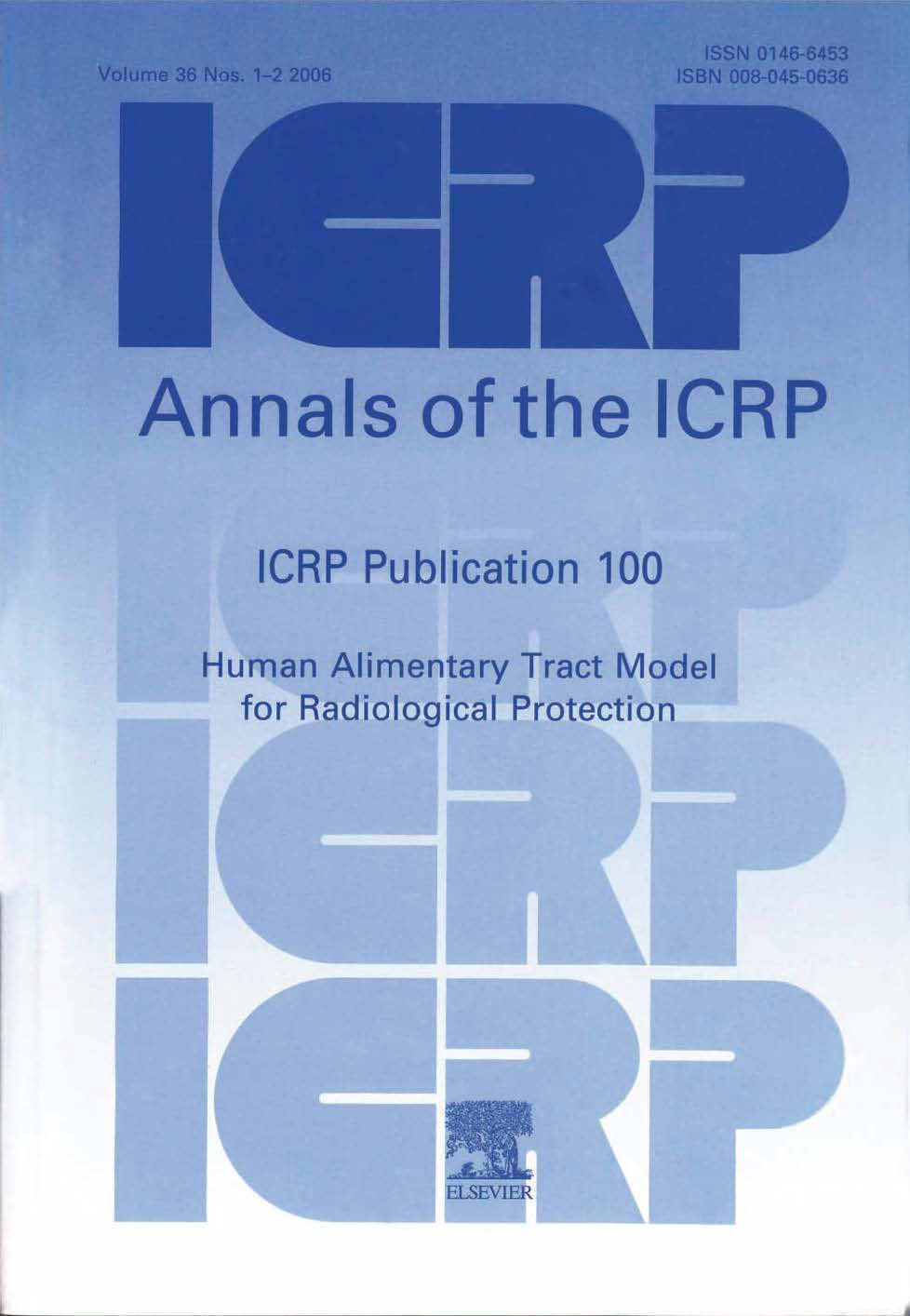ICRP Publication 100
Human Alimentary Tract Model for Radiological Protection
Recommended citation
ICRP, 2006. Human Alimentary Tract Model for Radiological Protection. ICRP Publication 100. Ann. ICRP 36 (1-2).
Abstract - In this report, the ICRP provides a new biokinetic and dosimetric model of the human alimentary tract to replace the Publication 30 model. The new human alimentary tract model (HATM) will be used together with the human respiratory tract model (HRTM) in future ICRP publications on doses from ingested and inhaled radionuclides.
The HATM is applicable to all situations of radionuclide intake by children and adults. It provides age-dependent parameter values for the dimensions of the alimentary tract regions, and associated transit times for the movement of materials through these regions. For adults, gender-dependent parameter values are given for dimensions and transit times. The default assumption is that radionuclide absorption takes place in the small intestine, but the model allows for absorption in other regions and for retention in or on tissues within the alimentary tract when information is available. Doses are calculated to target cells for cancer induction in the oral cavity, oesophagus, stomach, small intestine, and colon.
This report provides reviews of information on the transit of materials through the alimentary tract and on radionuclide retention and absorption. It considers data on health effects, principally in order to specify the target cells for cancer induction within the mucosal lining of the tract and to justify approaches taken to dose averaging within regions. Comparisons are made between doses calculated using the HATM and the Publication 30 model for examples of radionuclide ingestion for which absorption is assumed to occur in the small intestine alone. Examples are also given of the effect on doses of considering absorption from other regions and the effect of possible retention in the alimentary tract. This report also considers uncertainties in model assumptions and their effect on doses, including alimentary tract dimensions, transit times, radionuclide absorption values, and the location of targets for cancer induction.
ICRP, 2006. Human Alimentary Tract Model for Radiological Protection. ICRP Publication 100. Ann. ICRP 36 (1-2).
Abstract - In this report, the ICRP provides a new biokinetic and dosimetric model of the human alimentary tract to replace the Publication 30 model. The new human alimentary tract model (HATM) will be used together with the human respiratory tract model (HRTM) in future ICRP publications on doses from ingested and inhaled radionuclides.
The HATM is applicable to all situations of radionuclide intake by children and adults. It provides age-dependent parameter values for the dimensions of the alimentary tract regions, and associated transit times for the movement of materials through these regions. For adults, gender-dependent parameter values are given for dimensions and transit times. The default assumption is that radionuclide absorption takes place in the small intestine, but the model allows for absorption in other regions and for retention in or on tissues within the alimentary tract when information is available. Doses are calculated to target cells for cancer induction in the oral cavity, oesophagus, stomach, small intestine, and colon.
This report provides reviews of information on the transit of materials through the alimentary tract and on radionuclide retention and absorption. It considers data on health effects, principally in order to specify the target cells for cancer induction within the mucosal lining of the tract and to justify approaches taken to dose averaging within regions. Comparisons are made between doses calculated using the HATM and the Publication 30 model for examples of radionuclide ingestion for which absorption is assumed to occur in the small intestine alone. Examples are also given of the effect on doses of considering absorption from other regions and the effect of possible retention in the alimentary tract. This report also considers uncertainties in model assumptions and their effect on doses, including alimentary tract dimensions, transit times, radionuclide absorption values, and the location of targets for cancer induction.
